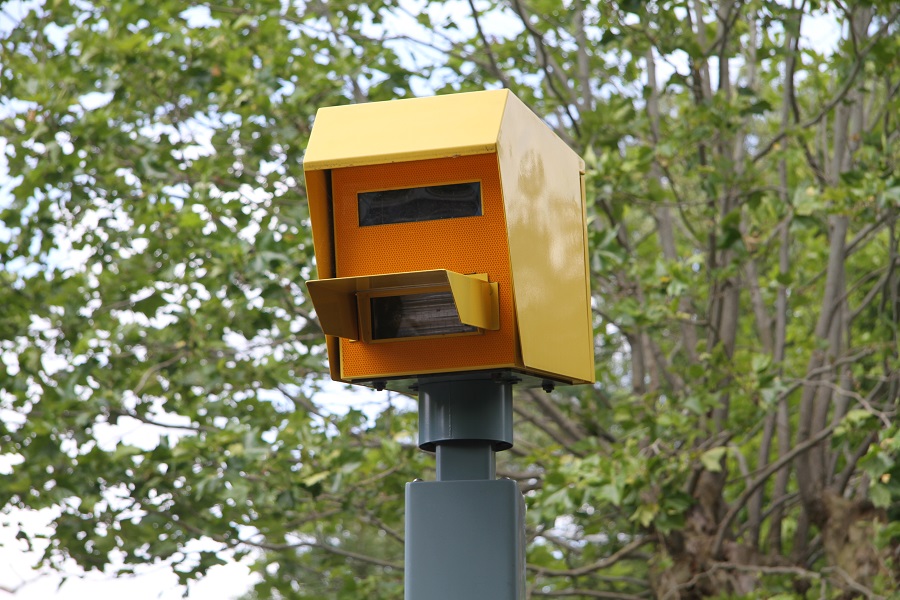Your dash cam might keep an eye on the world around you, but what about the cameras watching… you? Here’s UK speed cameras: explained.
What do meatballs, muppets and massive mazes all have in common? The Ikea warehouse with the meal awaiting your escaping it, and the muppet chef? All Swedish. As was a racing driver who got vexed with the limitations of his car’s speed measuring equipment. It was only as good as the bloke pressing the stopwatch button. He wanted accurate. It was 1958. His name was Maurice Gatsonides.
And so, ironically it was a racing driver’s quest for speed which spawned the technology for the widespread policing of it. Our first red light camera was installed in Nottingham, UK in 1988. There had been a triple fatality at the spot. The A316 Twickenham bridge was the site of the first UK camera-derived speeding ticket. I recall some motorcyclists showing off, making the news. One managed to register three figures. How he did not die is a mystery, given the space available to achieve it. Another hid his plate and exposed his rear end.
Speed cameras in the modern day
Ever since, there’s been a proliferation of cameras. Bus lanes, no turn sign violations and Ultra Low Emissions Zone (ULEZ) enforcement are just some of the contexts you’ll find them in. I paid a fine when I drove 200 yards along a ULEZ road in a loan car! Expensive lunch trip.
Not unnaturally, I was like a squirrel spotting a cat, the first time I saw a Gatso. Horrified and frightened and vexed all at once! I made it my business to learn all I could. I felt this was a new technical enemy. Waiting to catch me out in moments of foolishness or over enthusiasm? Darn it, foolish and over enthusiastic have always been issues with me. So I do also like a device to tell me to “COOL IT!” now and again. And those devices are looking out for these cameras.
Here, we will teach you how to identify speed and naughtiness cameras and tell you how they work. From famous to not so much…
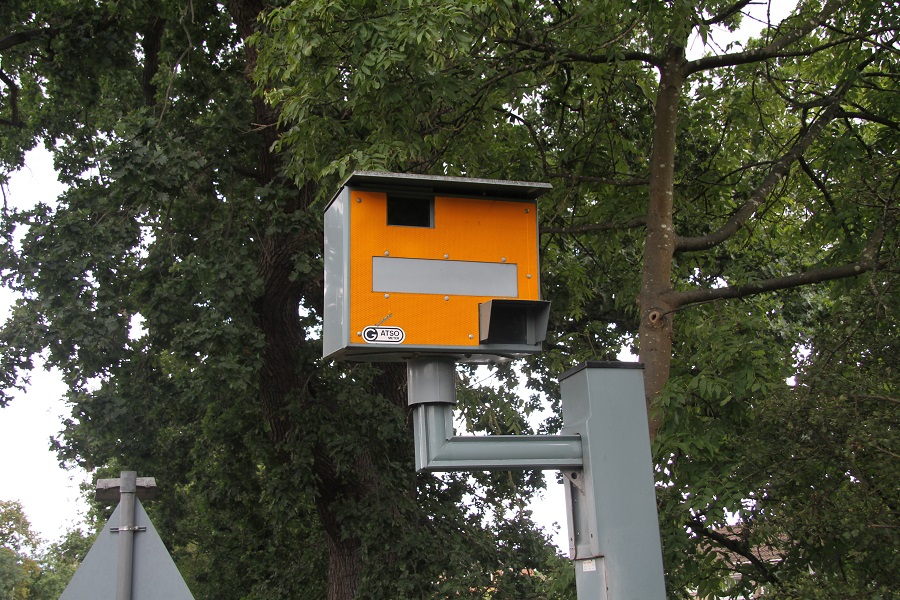
GATSO – Old Analogue, New Digital
The OG and most familiar device. Mounted on a short square pole, on an arm to aim it at the road. Emitting RADAR means that when I was running a detector, I could tell when they were dead or alive irrespective of knowing their mere location. Many were not live, nor were they used all at once, instead serving as a ‘one-up’ from fibbing scary camera signs. I am also certain that there was misinformation put out some years ago about the originals over the London orbital M25 motorway. It made the news that they were ‘going digital’; they were £20,000 each and could run out of film. To this day I now seriously doubt the ‘digital’ bit with this model. There have been NIL new ones installed.
Instead, all the new cameras and site upgrades are to SpeedCurb equipment. Not only is that one digital but it is put a LOT higher up. It isn’t on a swivel arm like a Gatso, just on a vertical pole. The Gatso’s arm was used by bikers to hang half a tire on a chain over it. I saw a video, filled with gasoline, the steel armoured camera was made to withstand drills and even bullets. But cooking it was usually fatal. Silly thing is, the Gatso is armoured and rugged but here, every single one stands next to their power supply. The stubby non-security little box is where the fuse is connecting power to the camera. I have never heard of any crim who attacked that bit. And anyway, just don’t do it. The offence is a lot worse than the speeding pics it took of you, I promise.
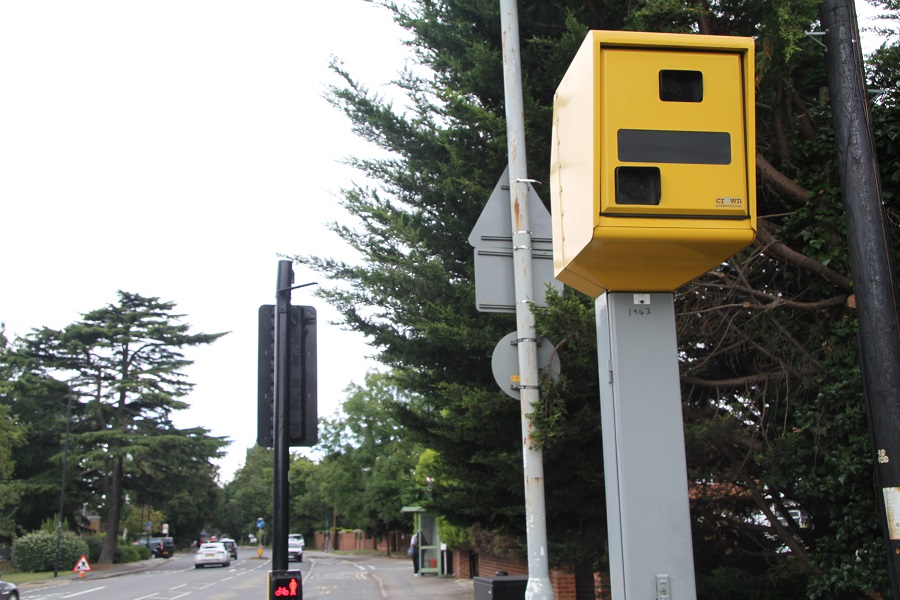
Digital GATSO Serco Smart pole
The same manufacturer but a more oblong box with a different look. Not as common as their older model, I have only seen a few of these about. They are definitely digital and not part of the misinformation campaign that I think was used about re-equipping the insides of the old models. Same locational and directional function.
- Locations: Roadside at problem spots and also at traffic lights as red light cams
- USE: Speeding and red light contravention
- Technology: RADAR and film photography with a new model that is digital
- Shoots you in the: ASS

SPECS Digital
This covers up to four lanes with a date and timestamp to go with your pictures. This famous system faces the traffic and is usually painted yellow. The stylised ‘M’ in the bracket of their own gantries is a little branding giveaway. In the early days, folks said if you changed lanes during the gaps between these cameras, you could fool them. This was actually true. But only a fool would have tried it (I didn’t) and that was cured rapidly by the software engineers.
These can measure everyone and it won’t run out of film as it is pure digital. The naughty step alert will be being generated before you get home, if you hurtle in an average speed zone. The use of these cost £1.5m a mile when they started in 2000 and yet dropped to £100,000/m by 2016. They proliferated and as such the A9 in Scotland has a 99 mile controlled stretch. I drove it once. It felt a bit ‘Big Brother is Watching You’! But that is what it is for and that was a dangerous, twisty, over-sped road, now tamed.
These days, you can find SPECS Digital cameras in villages near fast roads, where residents have been irritated by huge drive-by speeds. The best mitigator is radar-cruise control and a device that can detect average speed zones and show your average, too. You don’t go any faster but the worry is eradicated.
- Locations: Trunk roads on its own gantries as well as overhead on motorway gantries
- USE: Speeding by measured average velocity over the entire stretch covered
- Technology: INFRA RED and ANPR (number plate recognition)
- Shoots you in the: FACE, repeatedly
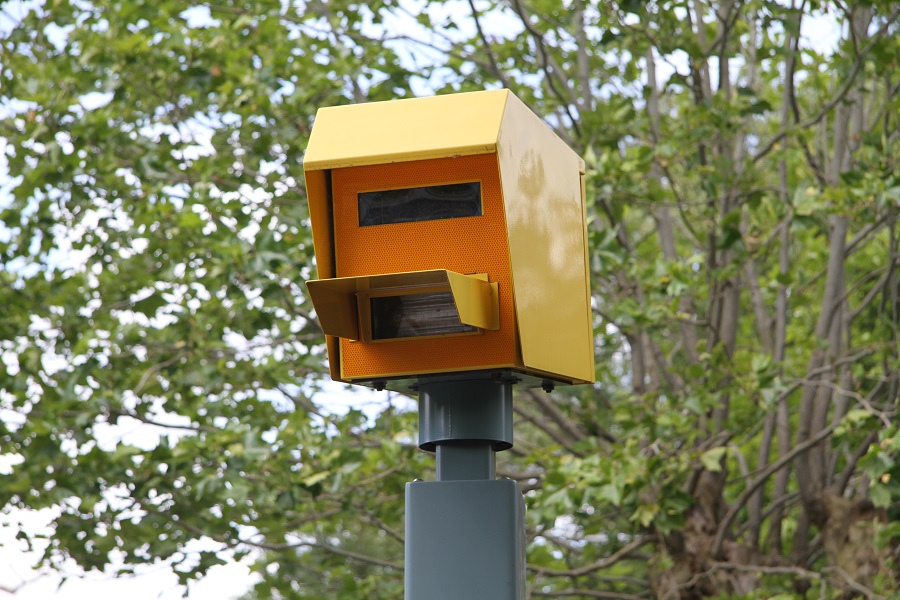
SpeedCurb
The one that has replaced the Gatso, despite there being a digital Gatso. It is fully digital and uses no film so it can snap everyone. A smaller box compared to the digital Gatso, it is too high up to easily reach for naughty people to cover up. It also has no support arm to hang things from, so it is harder to vandalise. They point at the rear of the vehicle and if needed, can be found in two-way pairs in the central reservation of dual carriageways. This tallest pole system uses sensors embedded in the road to measure and trigger the camera, just like TruVelo. They’re very common and the one likeliest to get you, just by numbers.
- Locations: On its own square poles roadside or in central reservation
- USE: Speeding picture evidence
- Technology: Road sensors and digital photography
- Shoots you in the: ASS
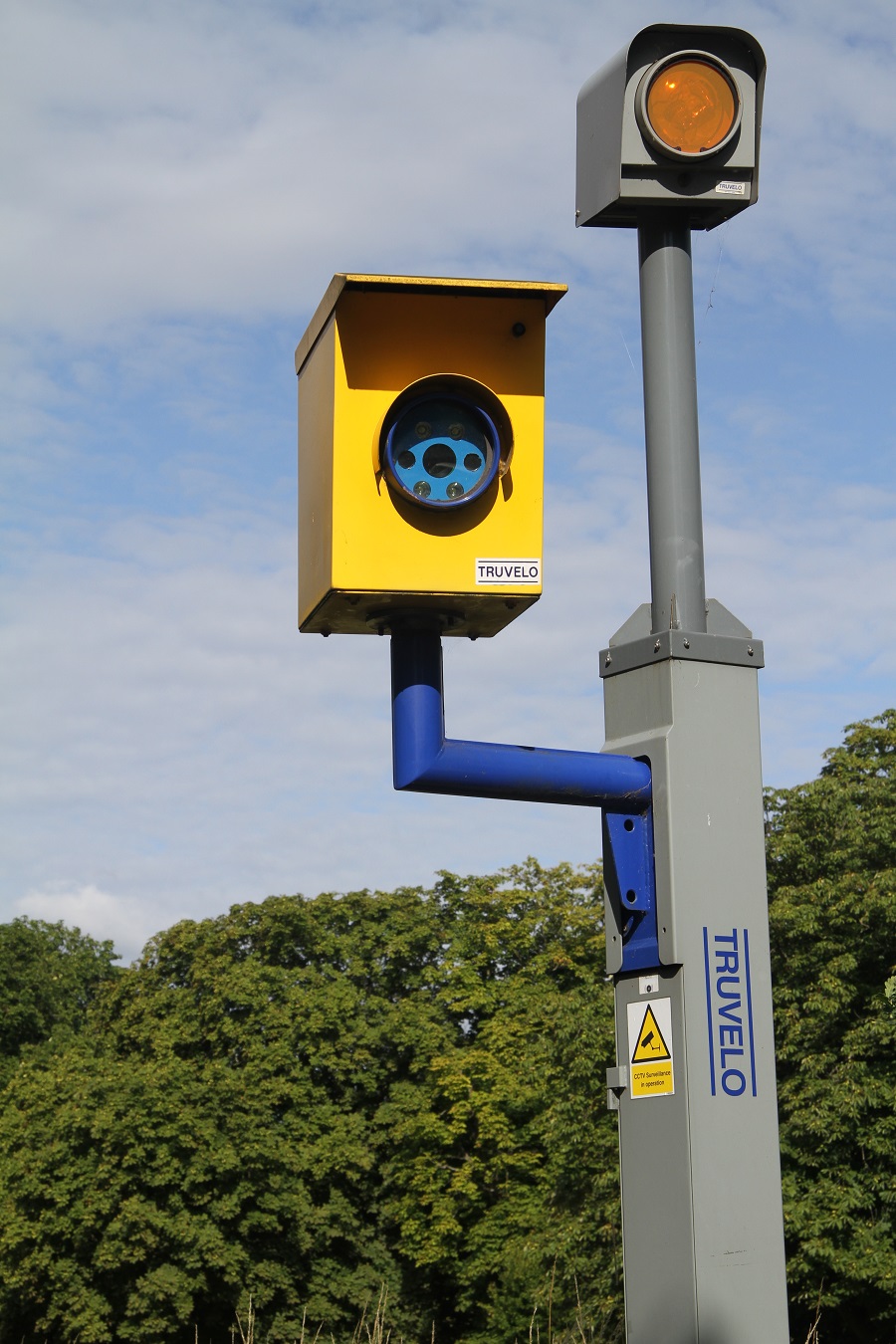
TruVelo and TruVelo D-Cam
This is the one that shoots you in the face with Infra red. It uses embedded sensors in the road to measure your speed and takes an infra red photograph so that it doesn’t blind you.
Near me, there was one that got pushed over by a reversing truck while I was at the local dump. Coming back, it was pushed over at an angle! It was repaired and large traffic bollards were put in the ground in front of it. Thing is, it is sited on a little hill. If you drive towards it and see it, you may slow down for going above 30mph. If, once past it, you squeeze the ‘go’ pedal again, you had better be careful. As literally 200 yards up the road is another facing the cars coming up the same hill. Literally placed so as to trick the naughty on purpose, like it was a war.
There is a new model by TruVelo called the D-Cam. It is curvy, oblate and yellow but easy to miss and was the last one to give me a scare. In Norwich, UK, they have them in the centre of some bigger roads. Even with the detector telling me, the signs present, and having driven the road quite often, I was too busy looking for a takeaway and thought I had messed up by 4mph.
- Locations: Main roads in a low oblate yellow housing
- USE: Speeding
- Technology: INFRA RED and ANPR (number plate recognition)
- Shoots you in the: FACE
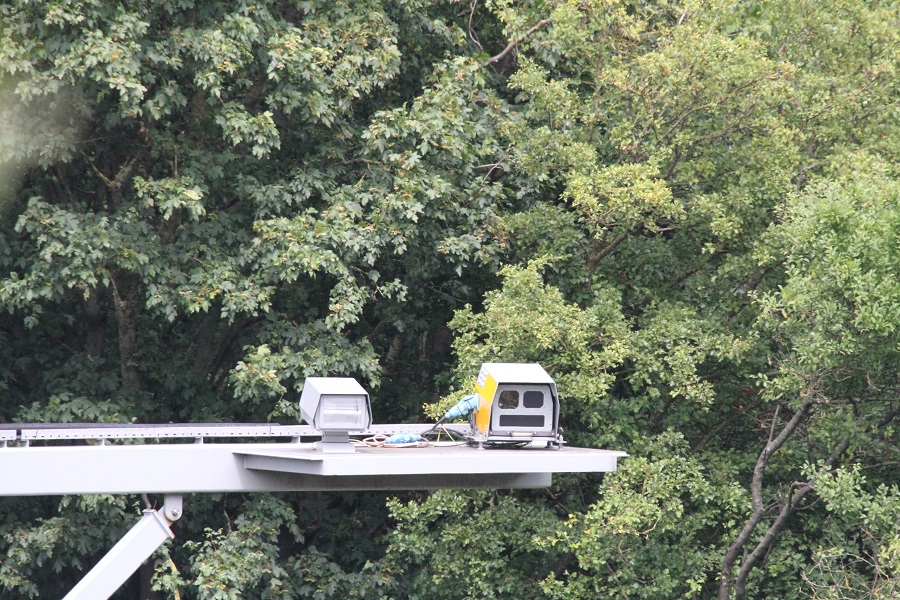
HADECS 3
A passenger saw an earlier system triggering on the opposite side of the road when we were on the M25. He said, “It looks like a quad-rocket!” And indeed it did have that four-barrelled look. Like the missiles fired in the movie Elysium, with the multiple space-vehicle killers. I think that might have been HADECS 2. This third looks like an angry ‘droid face.
They face the rear of the motorway carriageway and whereas the old gantry-mounted Gatsos remain in place as scary relics, these are very much alive. They can snap all the lanes they survey. One hint is the roadside surveillance traffic system just upstream. Two or three plain video cameras, presumably used for times when panicking drivers brake too hard just before the gantry cameras. But always there and low level, pointing at the gantry. These are powerful and the motorways are breeding them in serious numbers. The mendacious signs are still everywhere and due to them crying wolf, plenty of unwary get snapped by the new ones. It is so common that it is not a surprise to see it trigger when coming the other way. I admit I suffer a Pavlovian revulsion to flashguns when I am driving. So I don’t enjoy it when they go off!
- Locations: On motorway gantries, to the left, halfway up, two yellow boxes
- USE: Speeding picture evidence
- Technology: RADAR and digital photography
- Shoots you in the: ASS
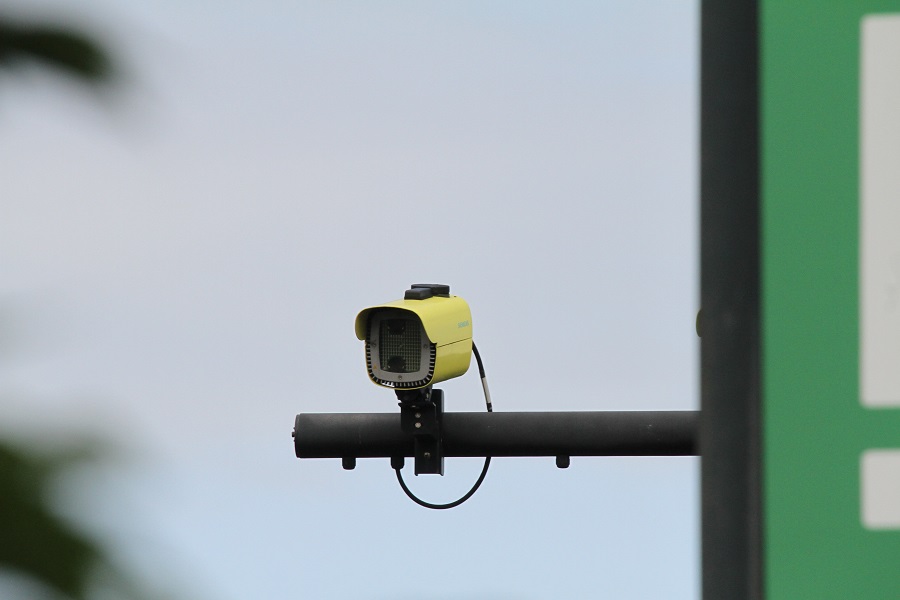
SAFEZONE SiCore by Siemens
Access control, speed and emissions enforcement are all quoted as capabilities of this one. It has its own VPN or virtual private network, powerful WiFi to help commission and is all about taking evidentially secure images. They even brag about it having potent quad core processing. Used for average speed monitoring, Safezone is also able to deal with the ULEZ zone if used that way. Installed in 2017 with a ten year contract for Siemens to look after them, there is a large cluster on major routes in London, UK. Again, a speed camera location detector will have these on its GPS database. A device that can show your average speed through it, will help you remain as a non-transgressor.
- Locations: Own gantries or roadside furniture
- USE: Speeding by average measurement or ULEZ enforcement
- Technology: ANPR
- Shoots you in the: FACE
Need a ULEZ-friendly car that still has some soul? Check out our picks of the best second-hand ULEZ-compliant cars.
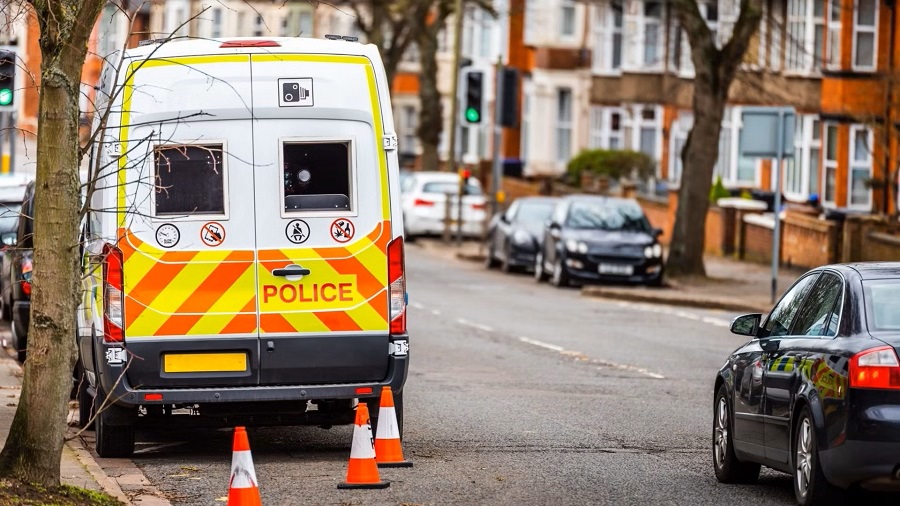
Mobile Vans
The lenses used on speed van cameras for the police are awesome. They have astonishing range and while they were budgeted because of traffic speed offences paying for them, they are mighty. Using your phone like an idiot? No seatbelt? Crisp, clear pictures of this are admissible evidence and photography will prove it.
They park on motorway bridges and in lay-bys. Often just around a bend after a long tempting straight or after a vista of zoomy-looking motorway. Any GPS speed trap locator system that has these places recorded will cry wolf all the time, because they are so common. The only thing that can affect them is bad visibility, so any water in the air or a slight mist will make it a tough photography day. And pictures at night through long lenses? Not happening. The only thing is to drive with some sense and remember that nothing beats your own vigilance.
Look up the road as far as you can, and you might just avoid the dreaded cam van…
- Locations: Bridges over trunk roads and motorways and roadside lay-bys
- USE: Speeding and seatbelt and phone misuse picture evidence
- Technology: RADAR and digital photography
- Shoots you in the: FACE
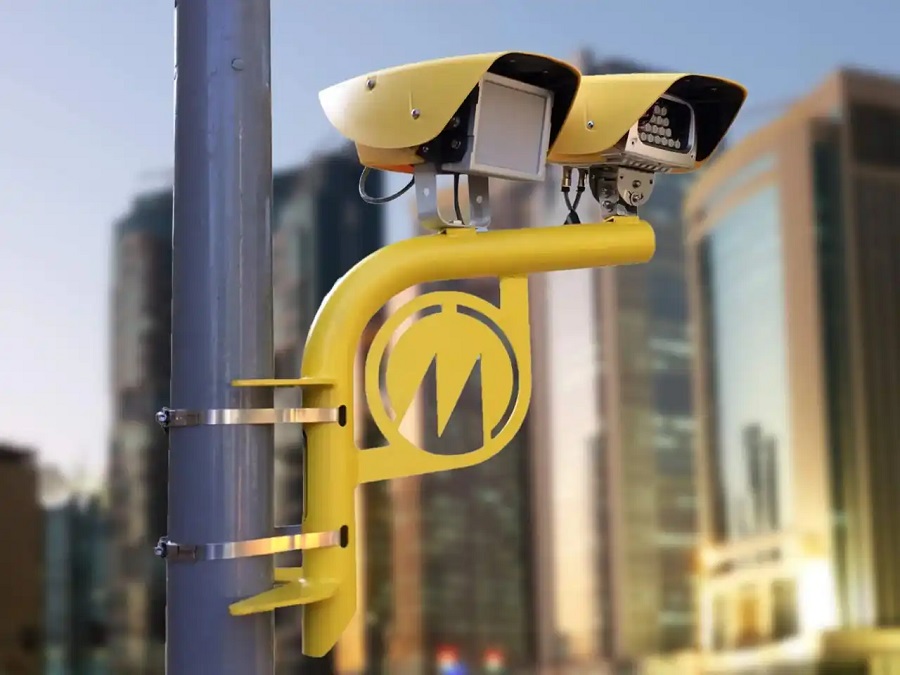
Vector SR
An average speed capable camera system, this is next generation from the same company as SPECS and can do more. It can enforce box junctions, bus lanes, traffic lights and even congestion zone management. Parking management and level crossings, means it is more versatile. They paint the speeding average ones yellow but the ones used for the other transgressions are grey. It uses tracking RADAR and ANPR. A new tech, it can read traffic going in either direction, depending upon how it is set up.
- Locations: On their own gantries as average speed cameras or else mounted to roadside furniture
- USE: Speeding by average reading and multiple offence evidence
- Technology: RADAR and ANPR
- Shoots you in the: FACE or ASS, horribly versatile
Speed Spike
Positioned in pairs facing each way, this is another ANPR based average speed detection system. This one can be used in roadworks with different speed limits on each carriageway. So it could enforce a 50mph limit on one side and a 60mph limit on the other. Not terribly common, it has a scary claim that it could hook a thousand units together if need be. I gather they are being used in 20mph zones in London. Comprising the SpikeHD ANPR camera and a server, from a company called PIPS Technology. In order for any of these systems to get used on UK roads, they have to seek Home Office approval, which they did in 2012.
- Locations: on its own poles and street furniture
- USE: Speeding by average velocity measurement
- Technology: ANPR
- Shoots you in the: FACE and ASS,
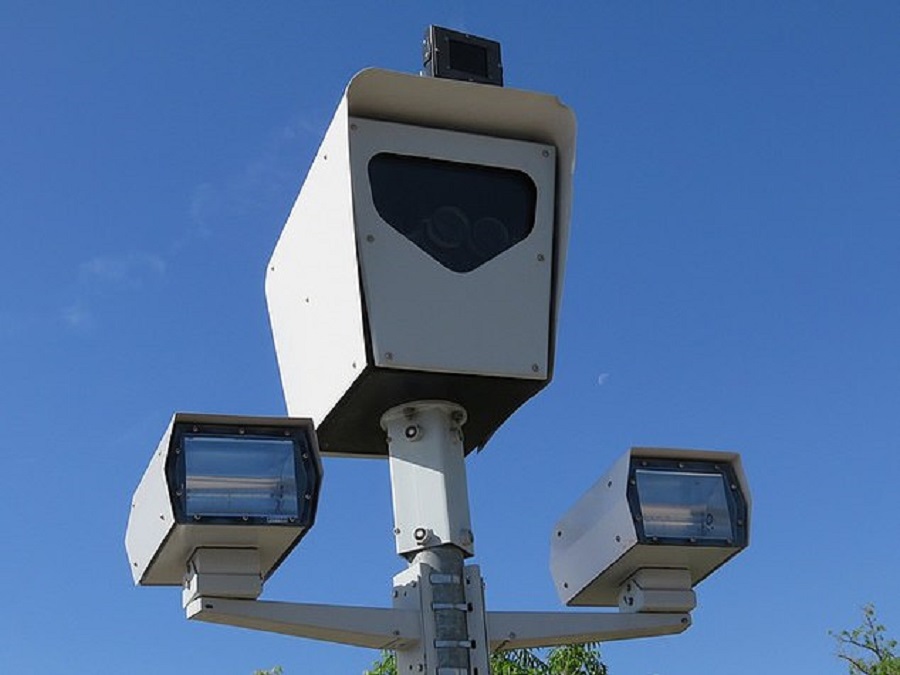
Redflex RED & SPEED
Two models, one for red light camera use, the other for speeding. The RED model can do red light enforcement and catch speeding through said lights’ junction. The SPEED model is for up to six lanes at once for motorways and trunk roads. It can also be used for average speed monitoring. It has an 11Mp digital camera and uses piezo loop detectors to get positional accuracy. Not common…
- Locations: Junctions, roadsides and motorways
- USE: Speeding, by average or at a point, as well as red light offences
- Technology: Piezo loop sensors in the road and digital photography
- Shoots you in the: ASS
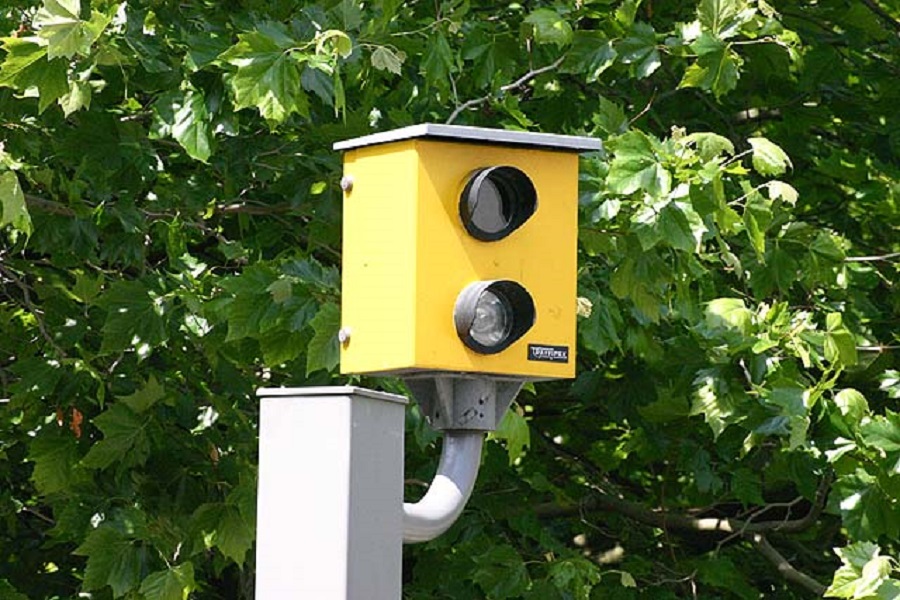
PEEK Traffiphot III
An early product, these never really took off versus Gatsos and were recognised by their two round lenses on the front. RADAR sensing for speed applications and shooting a flash at the rear of the vehicle, they were used in built up areas in a few towns. They use a piezo sensing loop in the road to trigger when used as red light cameras.
- Locations: Road sides
- USE: Speeding picture and red light evidence
- Technology: RADAR, piezo loop sensor and photography
- Shoots you in the: ASS

